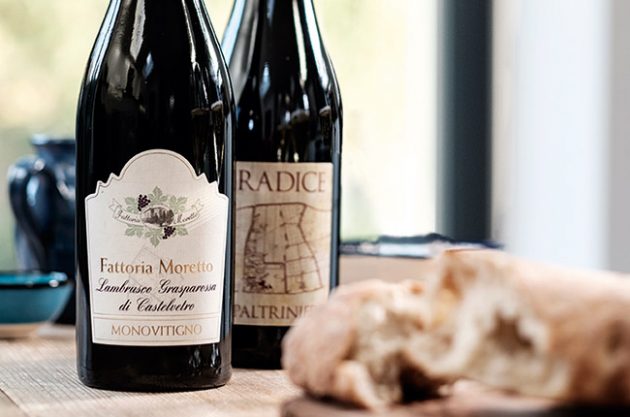Lambrusco: Back on the menu plus top wines worth trying
The perfect antidote for Emilia Romagna’s hearty food...

Lambrusco wine has a long history, stretching back to the Etruscans several millennia ago. The wines grew in popularity, becoming extremely successful in the 1970s, when they were exported in vast quantities all over the globe.
This success became a curse as well as a blessing, with volumes ratcheted up at the expense of individuality. However, the interest did allow new techniques to be developed, along with a better understanding of the vines and terroir.
Style and the relevant appellation varies depending on the fermentation method and the final resulting pressure.
Charmat method – The most common method, with the wine undergoing secondary fermentation in tank before being bottled.
Traditional method – Just as Champagne is made, with secondary fermentation in the bottle followed by disgorgement.
Ancestral method – Fermentation is paused by chilling and then held in tanks for several months before bottling. Once in the bottle, fermentation continues. This process, also known as Pétillant Naturel, usually produces a lower pressure, cloudy wine.
Lambrusco di Sorbara is often dry and zingy, with a raspberry-like acidity. Versatile in terms of style, it gives its best re-fermented in the bottle, via the ancestral or traditional method, gaining complexity on the lees.
Lambrusco Grasparossa di Castelvetro has a much deeper ruby colour and more complex fruity aromas of cherries and wild strawberries.
Lambrusco Salamino di Santa Croce is the richest of the Lambrusco varieties in terms of colours and structure, with aromas of raspberries, dark cherries and plums.
Frizzante: Made using the charmat method; a low CO2 level, offering between 1 and 2.5 bars of pressure at 20˚C, so only very lightly sparkling.
Spumante: Mostly made by the charmat method, though some use the traditional method. Pressure is a minimum 3 bars at 20˚C, so more sparkle than in the frizzante wines.
Ancestrale: The residual sugar post-fermentation causes refermentation in the bottle, leaving some yeast at the bottom of the bottle. Serve cloudy to enhance the aromas of yeast.
Amabile: Meaning off-dry, with around 30g-40g of sugar per litre, this is the style that made Lambrusco (in)famous.
Styles from Consorzio Tutela del Lambrusco di Modena, www.tutelalambrusco.it